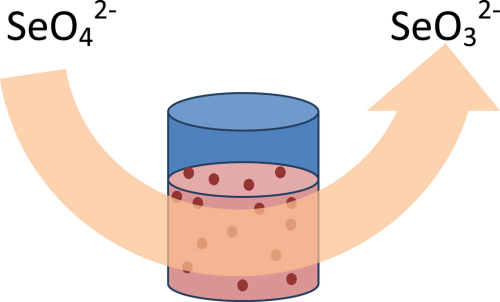
The removal of the toxic selenium compounds selenite and selenate from wastewater before discharge is becoming increasingly imperative in industrialised countries.
Bacteria can reduce selenate to selenite, but also further to elemental selenium, selenide, or organic selenium. In this Dutch paper, researchers at Wageningen University aim to exclusively bio-reduce selenate to selenite in an open high-rate bioreactor.
This conversion could be part of a two-stage process in which the selenite is subsequently reduced by chemical means under optimal conditions to produce a biomass-free selenium product.
In the process, the yield and reduction rate of biological selenate to selenite should be maximised, while formation of elemental selenium, selenide, and organic selenium compounds should be avoided.
Fed-batch experiments with a liquid volume of 0.25–0.75 L at different temperatures 20–30–40–50°C, pH settings 6–7–8–9, initial biomass concentration of 1 or 5 g wet weight granular Eerbeek sludge, and various lactic acid concentrations were performed to determine their effect on the biological conversion of selenate to selenite.
The researchers also investigated the effect on selenite losses by further biological reduction or, if present, chemical reduction.
Optimal selenate reduction to selenite was found at 30°C and pH 6 or 7 or 8 with 25 mM selenate and 13.75 mM lactic acid in the influent, with a selenite yield of 79–95%. In all the other conditions, less selenate was reduced to selenite.
Furthermore, a five times higher electron donor concentration resulted in less selenite production, with only 22% of the selenate converted to selenite.
The high yield and the high biological reduction rate of at least 741 mg Se/g initial VSS/day detected in the 1 g initial biomass experiment, indicate that biological selenate conversion to selenite is a feasible process.
Water Research, Volume 47, Issue 7, 1 May 2013, Pages 2118–2128.



